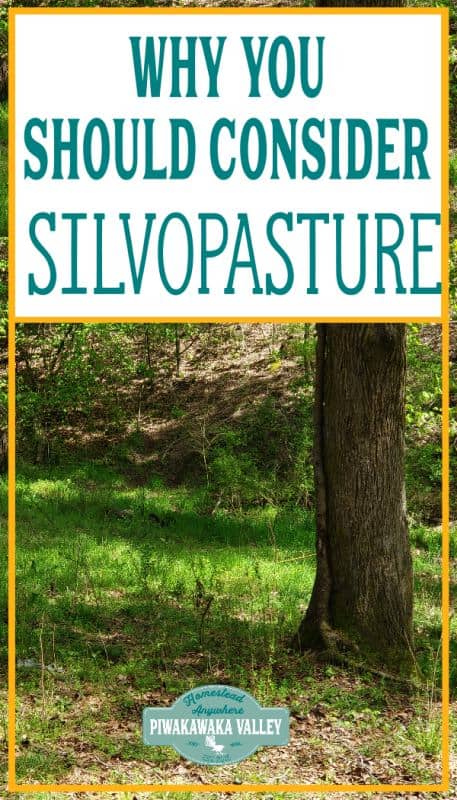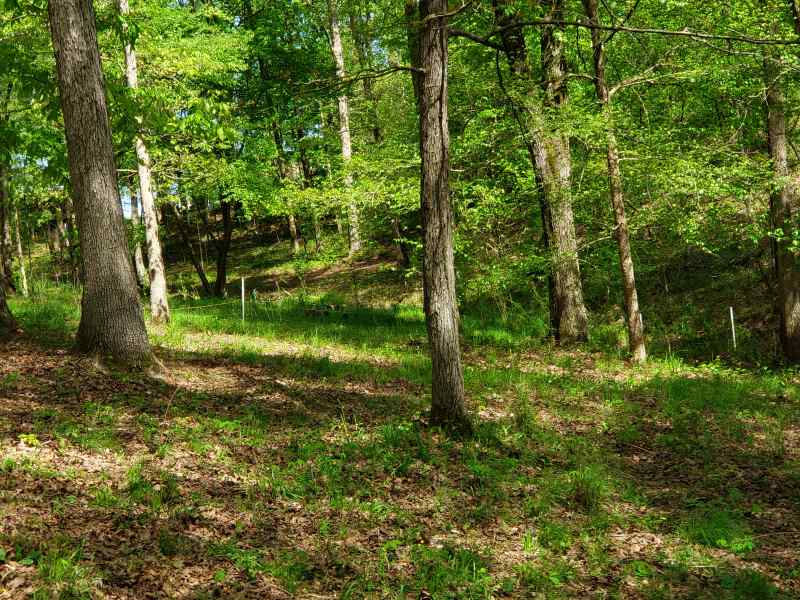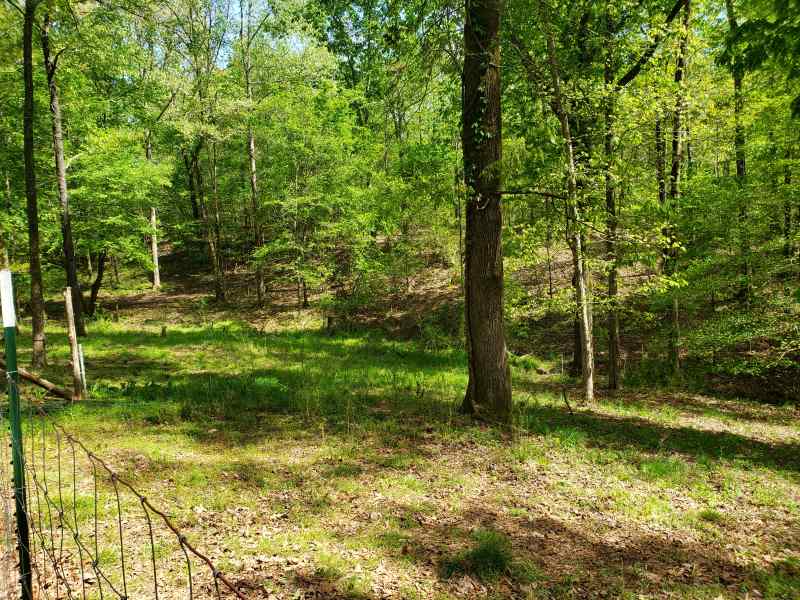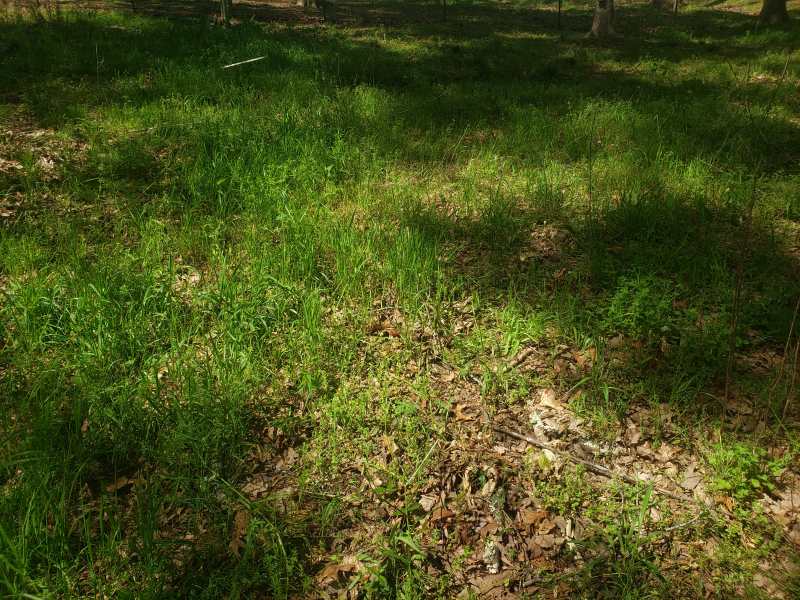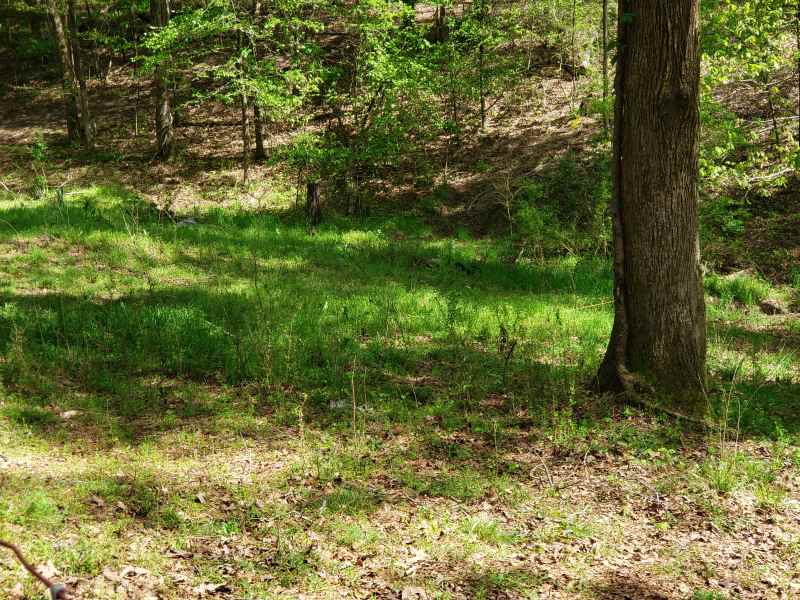What are the benefits of using a silvopasture system? The silvopasture benefits are many, but is it really right for your homestead?
Today’s post is brought to you by Shelby DeVore from Farminence
Please read: This information is provided for educational purposes only and is not intended to treat, diagnose or prevent any disease. We encourage you to make your own health care decisions in partnership with a qualified health care professional.
This post contains affiliate links, this means at no extra cost to you, we make a commission from sales. Please read our Disclosure Statement
You’re on the hunt for the perfect piece of property to raise livestock on. You picture rolling pastures, neat fencing and a cute little barn in the middle for your goats, sheep and cows. If you’ve been looking for a small farm site, you probably know that these picturesque farms are few and far between and often come with a hefty price tag.
An equally productive and often cheaper option is to find wooded land and turn it into silvopasture. Silvopasture can also be created with the current pastures that you already have.
Either way, silvopasture is a management technique that will allow you to get the most out of your land. Keep reading to find out if silvopasture is right for you.
RELATED: How to buy your dream homestead
RELATED: The 7 layers of a food forest
What is silvopasture?
‘Silvo-‘ refers to the growing of trees while pasture is the growing of forages and grasses for livestock. Silvopasture simply combines the growing of trees and pasture in the same space.
This may seem complicated, but it’s actually simple and has many benefits over just growing trees or just raising animals on pasture.
Silvopasture combines livestock production and growing trees to create a symbiotic environment. Both the trees and the livestock benefit from one another. If you’ve tried to grow grass in shaded areas, you know that it can be difficult to do.
It takes more management to grow productive silvopasture. However, once the silvopasture is established, it’s very easy to maintain.
Most silvopasture combines profitable timber that can later be harvested and sold. Pine trees grow quicker than most other tree species, and pine lumber is always in demand. Pine trees or other profitable trees can be spaced out in rows and grasses can be planted around them.
Fescue and legumes are often very successful in silvopasture systems. They don’t require full sun like Bermuda, timothy or other forages. They also seed out well and once established, will return year after year.
Legumes are especially helpful in silvopasture systems as they can help turn unusable nitrogen into usable forms of nitrogen in the soil.
RELATED: Why you should grow a food forest
Benefits of silvopasture for your livestock
One of the main reasons you’d be interested in silvopasture is because you want to raise livestock. You might be surprised that there are solid benefits to raising livestock in silvopasture as opposed to traditional pasture.
Silvopasture is cooler
One of the more obvious benefits is that your animals will be more comfortable. Heat stress can reduce how productive your animals are.
Females that are too hot may not come into heat properly, at the right time, or at all. If you’re trying to breed animals, this can be a frustrating problem to have. On a hot summer day, it’s significantly cooler in the shade than it is in the sun. Silvopasture creates ample shade where your animals can eat and remain cool without being cooped up in a barn.
Silvopasture is more nutritious
The forages in silvopasture may be more nutritious for your animals. The soil in a silvopasture system is often thick with nutrients. These nutrients make their way into the forages and then into your livestock.
Many producers have reported that their animals grew faster or were more productive in silvopasture systems. This could be from the more nutritious forages or the fact that they were more comfortable in the shade.
Silvopasture is better for the plants
I mentioned earlier that a silvopasture system is a symbiotic system. The trees and grasses will also benefit from the animals. As animals graze, they poop.
Their poop is full of nutrients that plants will use. That’s why using manure in gardens is so popular. As the animals graze, they’re fertilizing behind them. This will benefit both the forages and the trees that you’re trying to grow.
Silvopasture is lower maintenance
Animals will also help to reduce unwanted vegetation in your silvopasture. This is especially true if you’re planning on using goats in your silvopasture system. They will purposefully seek out the undesired vines, shrubs and weedy plants to consume, leaving more nutrients for your forages and trees.
Setting up a silvopasture system
There are two ways that you can create silvopasture. You can either start with an already wooded area or with pasture. Each one has its own pros and cons.
Starting with wooded land is harder upfront, but is often more successful. The soil in wooded areas is extremely rich.
The hard part is in cleaning the land up so that grass and forages can grow effectively. You’ll have to remove the smaller or unwanted trees first.
If you can, remove the stumps from these trees as well. If you don’t have a way to remove them, cut them as close to the ground as possible and make sure that they don’t try to grow back. You’ll also need to remove any shrubby growth.
Ideally, you want large trees and forages. Anything in between will simply take up nutrients and sunlight that your forages need to grow.
If you have pasture, the work up front is a little easier to establish silvopasture. You can plan out your system easier since you’re working with a clean slate.
The soil may not be as nutrient dense as a wooded area, but if it’s growing lush pasture without being fertilized then it’s in good enough shape to start silvopasture. Choose trees that will be profitable for you.
Again, pine trees are often a solid choice due to their rapid growth. Loblolly pines are one of the most dependable pine species when it comes to growing trees that will make you money.
In some areas, producers have used smaller trees that can be used as forage for their livestock. This is more common in tropical climates where trees tend to be smaller. This method doesn’t provide you with timber that you can sell, but it does provide many of the other benefits of silvopasture.
Which animals are suited for silvopasture?
All of them!
Cattle, pigs, sheep, goats, and poultry can all be raised successfully using silvopasture. Some of the first silvopasture systems that were researched were done with cattle.
Silvopasture for Cattle
Cattle, especially dairy breeds, are prone to heat stress problems in the summer. Dairy cows often have trouble coming into heat and may stop producing milk if it’s too hot. These same cattle can be raised in silvopasture and don’t have issues with heat stress.
Silvopasture for Pigs
If you’ve ever raised pigs, you know that heat stress is a major issue with them. Pigs cannot sweat and have a hard time cooling themselves off in the summer.
Pigs that are heat-stressed can develop a condition called PSE. PSE stands for pale, soft and exudative. PSE occurs when the muscles react to high temperatures and create too much acid.
The color leaches from the meat and much of the texture is lost. Pigs that have PSE and are harvested aren’t good to eat. The meat will taste off and has poor texture.
Pigs that are raised in silvopasture systems rarely have PSE problems and can produce a better-quality meat because of the reduced heat stress they experience.
RELATED: Caring for free range pigs
RELATED: Why we chose kunekunes
Silvopasture for Goats
When you think of raising animals in the woods, you may immediately think of raising goats. Goats love to eat shrubby plants that often thrive in the woods.
For this reason, goats are an excellent choice to raise in silvopasture. If you’re creating silvopasture from woods, consider putting goats on it to help clean up some of the unwanted plants.
You can also keep a goat herd with other livestock once your silvopasture is established. They will help prevent those unwanted plants from returning to your wooded pastures.
RELATED: Goat care tips for beginners
RELATED: The best dairy goat breed
Silvopasture for Sheep
Sheep won’t consume the shrubby plants that goats will. They prefer lush grass, so make sure that your silvopasture has plenty of grass for them to eat before putting sheep in your silvopasture system.
Silvopasture for Chickens and Poultry
Poultry can be raised almost anywhere, but they love silvopasture. The shade will help to keep them cool in the summer.
Silvopasture has a plethora of insects that chickens will enjoy hunting down and eating. Silvopasture is a great system to use if you want to raise pasture poultry or organic poultry. They’ll be able to find enough insects, seeds and forages to meet their needs each day.
RELATED: Ultimate guide to caring for chickens
Silvopasture is a better farming system
Simply put, silvopasture is just a better management system all around. When you utilize silvopasture, you’ll increase the amount of production you can get out of your land.
More production
Now, instead of growing just trees or raising just livestock, you’ll be doing both without increasing the amount of land that you own and farm.
Silvopasture allows you to do both in the same space, without sacrificing productivity.
Eco friendly
Silvopasture is the most eco-friendly way to raise livestock. It shouldn’t be news to you that farmland can be hard on the environment. When land is cleared for pasture, it displaces native species and can have negative impacts on the surrounding environment.
Silvopasture is a gentler way to farm. Many of the native wildlife species can still survive and thrive in your silvopasture. These species may not be as adaptable to a cleared pasture space.
Trees are also an excellent way to reduce greenhouse gas impacts, which is a growing concern for many people and farmers. Traditional pastures are normally fertilized, which can create excess fertilizer that leaches into nearby streams and water systems. Once silvopasture is established, it’s self-fertilizing and doesn’t create the excess fertilizer problems that traditional pasture does.
More stable and resilient
Many farmers look for the high years and dread the low ones. If your farm focuses on one type of production, it’s much more susceptible to having bad years when income is low and profits are tight.
Silvopasture is also more resilient to environmental changes. Pastures are more likely to die back during drought periods. Silvopasture isn’t.
Most silvopasture soil is rich with organic material, which helps to hold moisture in place. The shade provided by the trees in silvopasture also helps prevent the soil from drying out through evaporation. When your neighbors are struggling to feed their livestock during droughts, you’ll be sitting back in the shade watching your animals continue life as normal.
More income
Silvopasture helps to diversify your income. If you find yourself in need of some extra money one year, you’ll have timber to sell on top of the livestock that you produce. This extra cushion can help you survive those tough years.
If you are looking for a new homestead or want to improve the land that you have, you might like to consider converting to a silvopasture system.
About the author:
Shelby DeVore is the founder of Farminence. She has 20+ years of experience gardening and raising livestock. She currently lives on a 14 acre farm with her husband, two children, countless chickens, turkeys, goats, pigs, dairy cattle and honey bees.
If you would like help getting the most out of your garden, I would love to help you, find out more here
RELATED: Free Gardening Resources
If you like tips on frugal living, self sufficiency and consuming less, sign up to our newsletter below, I would LOVE to have you
For further reading, I also recommend all of these books. I own every one of them and they are amazing resources!
